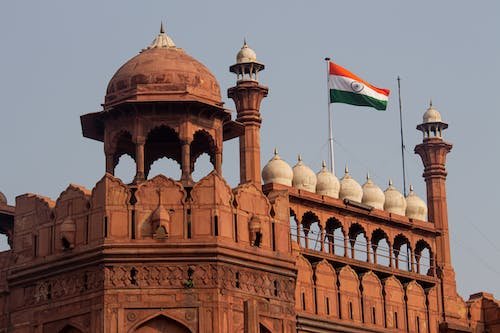The Prime Minister of India is the head of the government and the leader of the executive branch.
Prime Minister of India for Students
India is the largest democracy in the world, with a parliamentary system of government. The Prime Minister of India is the head of the government and the leader of the executive branch. The Prime Minister is elected by the members of the Lok Sabha (the lower house of Parliament) from among themselves, after a general election or a no-confidence motion. The Prime Minister appoints and heads the Council of Ministers, which consists of cabinet ministers, ministers of state, and deputy ministers. The Prime Minister is also the chief spokesperson of the government and the nation, both at home and abroad. In this essay, we will discuss the role, powers, responsibilities, and achievements of the Prime Minister of India for students.
Role of Prime Minister of India
The role of the Prime Minister of India is to lead and coordinate the functioning of the government and to implement its policies and programs. Some of the specific roles of the Prime Minister are:
- To advise the President on the appointment and removal of ministers, judges, governors, etc.
- To preside over the meetings of the Cabinet and its committees and to decide on the agenda and priorities of the government
- To communicate with the Parliament and the public on behalf of the government and to answer questions and debates in both houses
- To represent India in international forums and bilateral or multilateral negotiations and to maintain cordial relations with other countries
- To oversee the administration and security of the country and to deal with any emergency or crisis situation
Powers of Prime Minister of India
The powers of the Prime Minister of India are derived from the Constitution, the conventions, and the practices of parliamentary democracy. Some of the specific powers of the Prime Minister are:
- To appoint and reshuffle the ministers and to allocate portfolios among them
- To recommend or advise the President on important matters such as dissolution of Lok Sabha, proclamation of emergency, ordinance making, etc.
- To exercise control and supervision over all ministries and departments and to ensure their coordination and cooperation
- To appoint or nominate various constitutional or statutory authorities such as Planning Commission, National Security Council, etc.
- To act as the chairman or member of various inter-governmental or intra-governmental bodies such as NITI Aayog, National Development Council, etc.
Responsibilities of Prime Minister of India
The responsibilities of the Prime Minister of India are to uphold the Constitution, to serve the people, and to protect the national interest. Some of the specific responsibilities of the Prime Minister are:
- To ensure that the government functions according to the constitutional provisions and democratic norms
- To formulate and implement policies and programs that are in line with the manifesto and vision of the ruling party or coalition
- To address the issues and challenges faced by various sections and regions of society and to ensure their welfare and development
- To safeguard the sovereignty, unity, integrity, and security of India and to defend it from any external or internal threat
- To promote peace, harmony, cooperation, and development in India and in the world
Achievements of Prime Minister of India
The achievements of the Prime Minister of India depend on various factors such as their vision, leadership, performance, popularity, etc. Different Prime Ministers have different achievements in different fields such as the economy, social sector, foreign policy, defense, etc. Some examples of achievements of some Prime Ministers are:
Jawaharlal Nehru: He was the first Prime Minister of India and is considered the chief architect of modern India. He laid the foundation of a secular, democratic, and socialist India. He also established various institutions of science, technology, education, and culture. He played a key role in shaping India’s foreign policy based on non-alignment, peaceful coexistence, and anti-imperialism.
Indira Gandhi: She was the first woman Prime Minister of India and is regarded as one of the most powerful and influential leaders in Indian history. She led India to victory in 1971 war against Pakistan, which resulted in creation of Bangladesh. She also conducted India’s first nuclear test in 1974, which made India a nuclear power. She also initiated various reforms in agriculture, banking, industry, etc.
Atal Bihari Vajpayee: He was the first non-Congress Prime Minister to complete a full term in office and is respected as a statesman and a poet. He led India’s second nuclear test in 1998, which enhanced India’s security and prestige. He also launched various initiatives such as the Golden Quadrilateral project, Sarva Shiksha Abhiyan, Pradhan Mantri Gram Sadak Yojana, etc. He also improved India’s relations with major countries such as the USA, China, Pakistan, etc.
Narendra Modi: He is the current Prime Minister of India and is known for his charismatic and dynamic leadership. He has implemented various schemes such as Make in India, Digital India, Swachh Bharat Abhiyan, Ayushman Bharat, etc. He has also boosted India’s economy and foreign policy by attracting foreign investment, enhancing trade, and strengthening strategic partnerships.
Conclusion
The Prime Minister of India is the head of the government and the leader of the executive branch. The Prime Minister has various roles, powers, and responsibilities to lead and coordinate the functioning of the government and to implement its policies and programs. The Prime Minister also has various achievements in different fields such as economy, social sector, foreign policy, defense, etc. The Prime Minister is an important and influential figure in India’s democracy and development. Therefore, it is essential for students to learn about the Prime Minister of India and its implications for the present and future of society.







